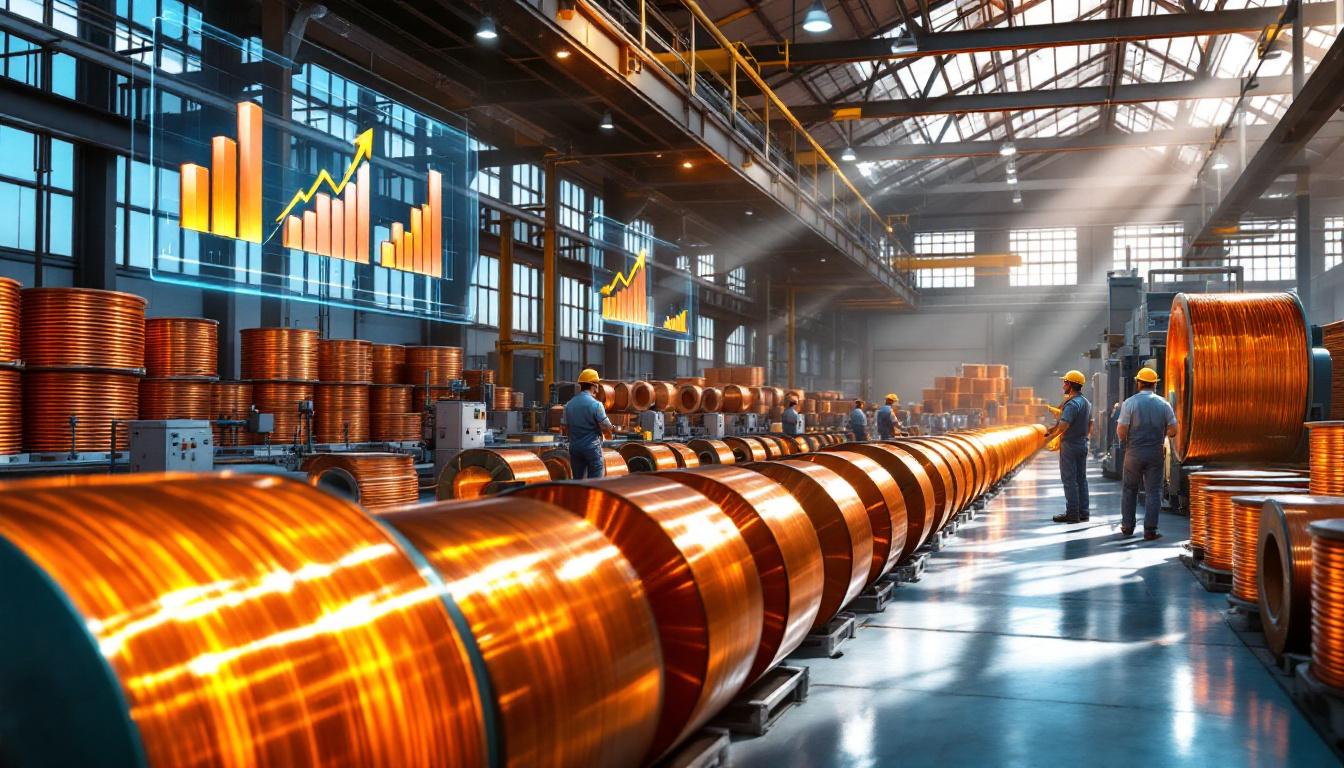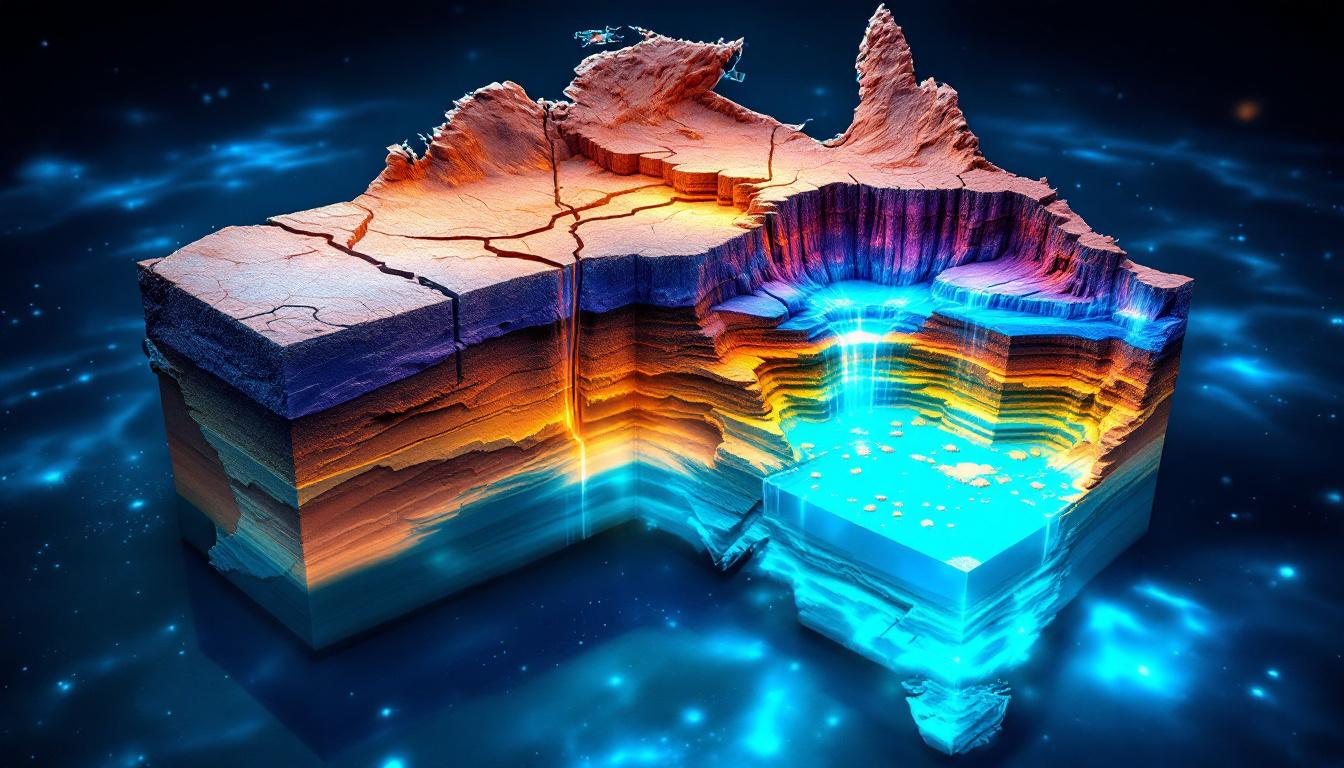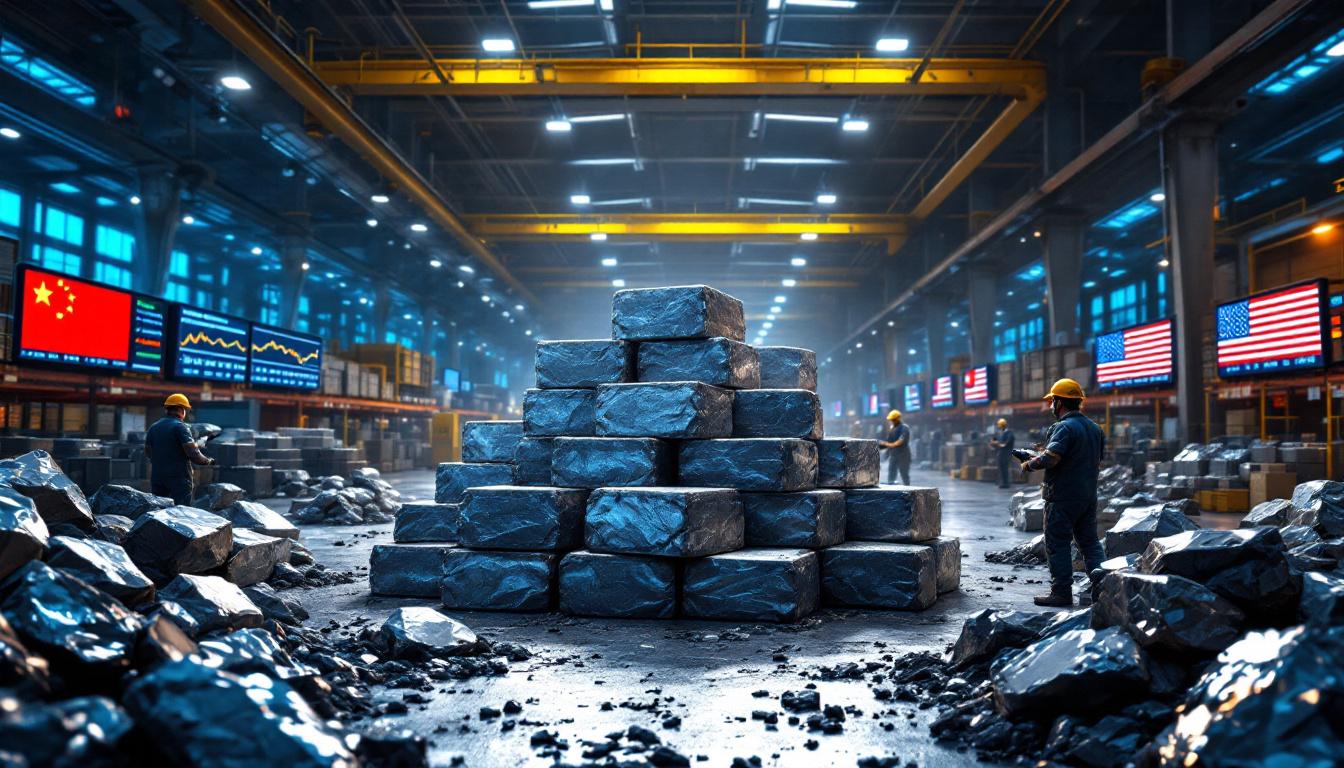Saudi Arabia's Strategic Push in Critical Minerals: Ma'aden's Rare Earths Ambitions
Saudi Arabia's state-owned mining giant Ma'aden is spearheading a transformative initiative to establish domestic rare earths processing capabilities through strategic international partnerships. This ambitious plan, aligned with Crown Prince Mohammed Bin Salman's Vision 2030 economic diversification agenda, positions the kingdom to become a key player in the global supply chain for materials essential to electric vehicles (EVs), renewable energy systems, and advanced technologies.
Ma'aden's Rare Earths Processing Plan: Objectives and Timeline
Ma'aden is carefully evaluating four international firms for potential partnerships in rare earths processing: US-based MP Materials, China's Shenghe Resources, Australia's Lynas Rare Earths, and Canada's Neo Performance Materials. The Saudi mining champion aims to select at least one partner by June 2024, with a comprehensive timeline for mining and processing operations to be finalized by December 2024.
The strategic vision extends beyond mere extraction—Ma'aden plans to develop complete vertical integration within Saudi borders, from mining operations to processing facilities and eventually magnet production. This approach aligns perfectly with Saudi Arabia's ambition to become a global critical minerals hub, keeping value-added activities within the kingdom.
Technical challenges abound in rare earths processing, as the facility must handle 17 distinct metals with similar atomic structures. This requires sophisticated sequential extraction processes that prevent selective mining of individual elements—highlighting why partnership with experienced operators is crucial for success.
Vision 2030: Economic Diversification through Minerals
The minerals processing initiative represents a cornerstone of Vision 2030, Crown Prince Mohammed Bin Salman's ambitious economic transformation program. Saudi officials have dramatically revised their mineral wealth estimates upward to $2.5 trillion—nearly double previous assessments—largely due to newly identified rare earth deposits across the kingdom.
Vision 2030 targets increasing non-oil exports from 16% to 50% of GDP by 2030, with minerals processing expected to contribute approximately 15 percentage points to this growth. The mining sector alone is projected to create 256,000 new jobs by 2030, requiring 12% annual workforce growth to meet demands.
Beyond economic diversification, these minerals have become strategically essential for tech-focused economies worldwide. Rare earths form the building blocks for artificial intelligence technologies, electric vehicles, and numerous high-tech applications. The specialized magnets produced from these elements convert electricity into motion for EVs, cell phones, and countless other devices that define modern life.
Comparative Analysis of Partner Capabilities
Each potential partner brings unique strengths to the negotiating table:
Shenghe Resources and Neo Performance Materials represent the most experienced operators in rare earths processing and magnet production, with Shenghe controlling approximately 20% of China's rare earth processing market through its Sichuan operations.
MP Materials processes about 15% of global rare earths supply from its Mountain Pass mine and is actively expanding its magnet production capacity by 40% by 2025, despite currently sending materials to China for processing.
Lynas Rare Earths operates the world's largest single rare earths processing plant in Malaysia, producing 22,000 tonnes annually, and is developing additional capacity in Texas.
Existing relationships add complexity to partnership decisions. MP Materials already supplies Shenghe with rare earths from its California mine for processing in China, and the two companies jointly invested in a Vietnamese processing facility in 2023—though they plan to unwind that arrangement.
China's Market Dominance and Global Competition
China maintains overwhelming control of the rare earths value chain, handling nearly 90% of global refining capacity and 92% of permanent magnet production. This dominance traces back to strategic investments beginning in the 1980s that positioned China as the world's rare earths processing hub.
Recent geopolitical tensions have intensified competition in this sector. Beijing banned the export of rare earths processing technology in 2023 and implemented export restrictions on finished products including magnets—moves that have accelerated Western nations' efforts to develop alternative supply chains.
Despite these restrictions, Saudi-China collaboration continues in the minerals sector. Teams from the China Geological Survey have mapped 120 potential rare earth sites in Saudi Arabia since 2023, and Chinese firm Zijin Mining Group is developing a $1.4 billion zinc smelter in the kingdom that incorporates rare earth byproduct recovery systems.
Technical and Market Challenges in Rare Earths Processing
The standard process for refining rare earths presents significant environmental and economic challenges. Processing requires crushing ore to 75μm particle size, multi-stage flotation with specialized reagents, 18-step solvent extraction, and high-temperature calcination between 800-1500°C.
These operations typically generate 2.5 tonnes of radioactive waste per tonne of rare earth oxide produced, presenting substantial environmental management challenges. The technical complexity explains why processors must contend with all 17 different metals rather than selecting only the most valuable elements.
The global response to these challenges has been swift. US President Donald Trump invoked the Defense Production Act to boost American metals refining capabilities, while Western allies have formed critical minerals partnerships to reduce dependence on Chinese supply chains.
Saudi Arabia's Broader Minerals Strategy
The kingdom's minerals strategy extends beyond rare earths. The Global Supply Chain Resilience Initiative is investing 35 billion riyals ($9.32 billion) in comprehensive processing infrastructure, including copper smelters from India's Vedanta and a zinc facility from China's Zijin.
The Saudi sovereign wealth fund holds a 61% stake in EV manufacturer Lucid Motors, creating vertical integration potential between mineral processing and vehicle manufacturing. Lucid opened its first overseas plant in Saudi Arabia in 2023, establishing a clear pathway from mineral extraction to finished high-tech products.
Other promising initiatives include Australia's Hastings Technology Metals signing a non-binding MOU for a potential rare earths facility, and US firm Critical Metals exploring a lithium refinery with Riyadh-based Obeikan Group. Meanwhile, Ma'aden's innovative seawater lithium extraction technology demonstrates the technical ambition underpinning these projects, though commercial viability remains in development.
Future Projections and Market Impact
If successful, Saudi Arabia could capture 12-15% of global rare earth processing capacity by 2035, potentially reducing China's market share below 75% for the first time since 2000. The kingdom's low energy costs ($0.03/kWh versus $0.12/kWh global average) provide a significant competitive advantage in energy-intensive processing operations.
Saudi Arabia's comprehensive approach positions it not merely as a resource supplier but as a potential technology leader in sustainable critical minerals leadership. This strategy could reshape global supply chains while supporting the worldwide energy transition through reliable production of essential components for renewable technologies.
In fact, this initiative represents Saudi Arabia's strategic response to growing critical mineral shortages that threaten to impede the global clean energy transition. Furthermore, it demonstrates how Middle East mining investments are increasingly focusing on strategic minerals rather than traditional resources.
The kingdom's entry into rare earths processing could significantly alter the dynamics of the critical minerals race currently dominated by China, Australia, and the United States, while helping to address some of the most pressing mining industry challenges related to sustainability and supply chain security.
FAQ: Saudi Arabia's Critical Minerals Strategy
Why is Saudi Arabia interested in rare earth elements?
Rare earth elements are essential components for high-tech industries including electric vehicles, renewable energy, and defense technologies. By developing domestic processing capabilities, Saudi Arabia aims to position itself as a key player in the global supply chain for these critical minerals while creating high-value jobs and reducing dependency on oil revenue.
How does this initiative fit into Saudi Arabia's broader economic plans?
The minerals processing initiative represents a cornerstone of Vision 2030, which seeks to reduce Saudi Arabia's dependence on oil revenues by diversifying into sectors like mining, manufacturing, and technology. The mining sector alone is projected to create over 250,000 new jobs and contribute significantly to non-oil GDP growth.
What advantages do the potential foreign partners bring?
Each potential partner offers complementary strengths: Chinese and Canadian firms bring extensive processing experience and technical expertise, while US and Australian companies offer advanced environmental management systems and connections to Western markets. These partnerships could help Saudi Arabia navigate both technical challenges and geopolitical considerations.
What impact could Saudi Arabia's entry have on the global rare earths market?
Saudi Arabia's emergence as a significant non-Chinese supplier of processed rare earths could fundamentally reshape global supply chains for these critical minerals. The kingdom's competitive energy costs and strategic location between Asian and European markets potentially position it as a stabilizing force in a market characterized by supply constraints and geopolitical tensions.
Ready to Spot the Next Major Mineral Discovery?
Discover how critical mineral announcements can lead to exceptional investment returns by exploring Discovery Alert's proprietary Discovery IQ model, which instantly alerts investors to significant ASX mineral discoveries with actionable insights. Visit the Discovery Alert discoveries page to see historic examples of how major discoveries have generated substantial market returns.




